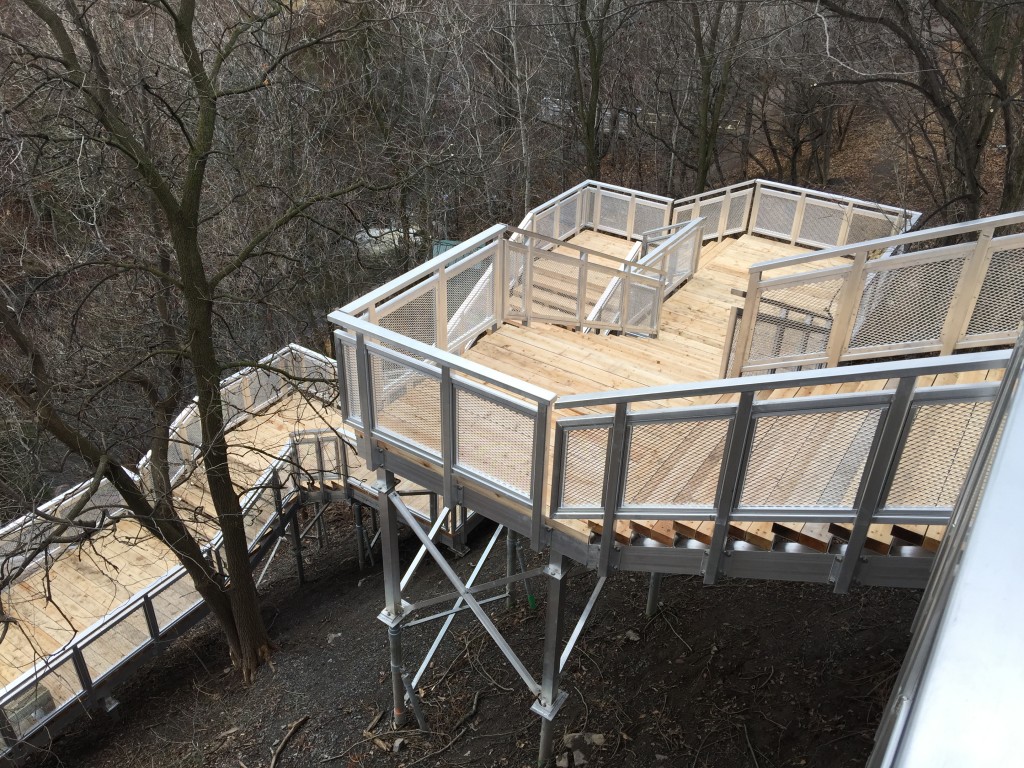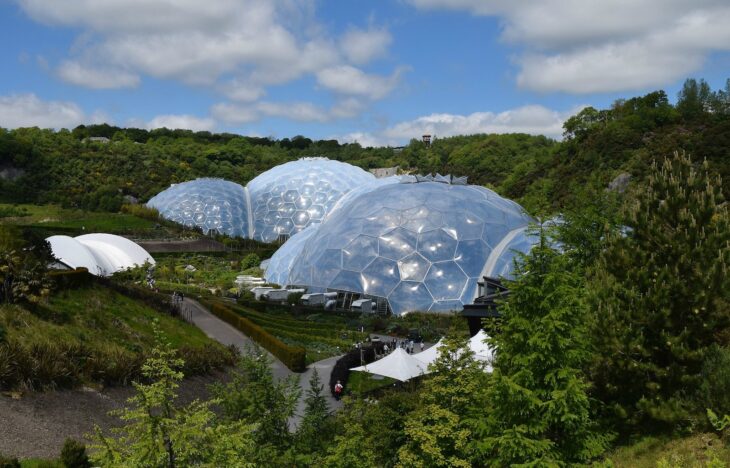By Jackie Walsh, Freelance Writer.
Global demand for aluminium is projected to increase by nearly 40% by 2030 according to a recent report by the International Aluminium Institute. The surge in demand is fueled by increased consumer focus on sustainability propelling transport, construction, electricity, and packaging sectors to use the metal in manufacturing products that are ecological. Aluminum is a common metal and exists in abundant quantities. It also possesses superior qualities that consumers seek — as it is robust, lightweight, corrosion-resistant, and versatile. In addition to being a good conductor of heat and electricity, it is recyclable making it a desirable element for various applications. For example, aluminum in landscape and garden design is a powerful tool in crafting natural and balanced spaces that are also environmentally friendly.
Ecological and Versatile
Landscape designs at company workplaces offer several benefits that can positively impact both employees and the organization. Thoughtfully designed outdoor spaces can transform an office to a visually pleasing and inviting environment. Beautifully maintained and designed spaces of greenery, flowers, and architectural elements improve the overall atmosphere making the workplace enjoyable and appealing.
Natural elements — such as trees, shrubs, and green spaces — have been shown to reduce stress and increase well-being. According to a study by Barton and Rogerson, green spaces promote better mental health and welfare, prompting a need to incorporate natural elements in the design of buildings and other shared spaces. Plants and trees act as natural purifiers to help filter out pollutants and improve indoor air quality. Proper landscaping can also provide shade and help regulate temperature. Furthermore, green spaces are believed to contribute to increased employee productivity. Studies have shown that natural spaces and views can enhance cognitive function, creativity, and problem solving abilities — such as Boston University research, which indicated that adding greenery in residential areas can assist in improving cognitive function among middle-aged women. Likewise, a paper by Larson and Hipp suggested that parks and green spaces are important to physical and mental health promoting active lifestyles and enhancing cognitive functioning.
Unfortunately, landscaping can become wasteful depending on the scale of the project, the design choices made, and the level of sustainability considerations. On top of material waste, inefficient construction practices such as poor grading or excessive excavation can result in unnecessary use of resources like fuel, water, and energy. Designing landscapes that require excessive maintenance — such as frequent watering, mowing, or chemical treatments — may lead to resource waste. Therefore, failure to consider sustainability in landscape design increases the possibility of using non-recyclable, non-renewable or environmentally harmful materials.
Fortunately, aluminum is a landscaping material that has useful characteristics. It is robust, highly resistant to corrosion/rust, and weathering — making it an excellent choice for outdoor applications. It can withstand exposure to moisture, ultraviolet (UV) radiation, and temperature fluctuations, ensuring that landscape elements made from the metal have a long lifespan. Aluminum that is incorporated in garden spaces requires minimal maintenance over time unlike other materials that must be painted or sealed to maintain their appearance or structural integrity. Moreover, the element is significantly lighter making it easier to transport and install reducing labor and transportation costs.
Perhaps, the main advantage of aluminum is that it is highly recyclable without losing its properties and quality during the process. Reusing aluminum in landscape design reduces the demand for virgin resources and lowers the environmental impact associated with production. Its malleability is another plus factor since it can be used for different landscape applications such as outdoor furniture, decorative structures, and so on. In short, the material’s recyclability, low maintenance requirements, and long lifespan contribute to sustainable landscape practices resulting to lower environmental impact associated with installation, maintenance, and replacement.
Strategies in Creating Ecological Landscapes
A sustainable landscape design involves thoughtful planning and implementation. Hence, it is critical to define sustainability goals and objectives, such as reducing energy consumption, conserving water, minimizing waste, and using eco-friendly materials. Selecting aluminum that has a high recycled content reduces carbon footprint, since salvaged aluminum requires significantly less energy to produce than primary products. A study by Ding, et al., indicates that the aluminum industry has made significant progress in saving energy and reducing emissions.
When creating landscape elements, such as seating, pergolas, signage, and walkways, it is imperative to focus on durability. In this regard, aluminum is a suitable input since it can withstand harsh weather conditions and last for years reducing the need for replacements. Additionally, aluminum can be used as sustainable aesthetic features of public and workplace landscapes. For example, shade structures like pergolas or trellises lower the need for energy-intensive cooling systems by producing natural cover.
Downspouts and gutters made from aluminum can be integrated into a landscape design to collect and channel rainwater for irrigation. Harvested rainwater decreases reliance on potable water and conserves resources. Using aluminum for hardscape elements (i.e., non-living landscape elements) is eco-friendly as well. Furniture such as tables and chairs in aluminum are sturdy and resistant to rust and corrosion. Defining borders of garden bed and pathways not only prevent weed intrusion, but also provide a clean look while lighting fixtures made of aluminum are stylish and robust.
Notable Landscape Projects that Use Aluminium
Several important garden projects around the world have incorporated aluminum in their design, adding a modern and durable feature to the landscapes. The Hive at Kew Gardens is a unique and impressive architectural installation showcasing the relationship between bees and plants. Designed by UK-based artist Wolfgang Buttress, it is inspired by the form and structure of a beehive and is constructed primarily of aluminium and steel.

Another notable creation is the Eden Project in Cornwall (pictured at the top of this post), a famous botanical garden housed within large biome domes. The domes are built with aluminum hexagons and pentagons in ethylene tetrafluoroethylene (ETFE) pillows creating a stunning and energy-efficient environment for various plant species.
Japanese architect Tadao Ando is developing MPavilion 10 at as a meeting place within the Queen Victoria cultural and botanic gardens in Melbourne, Australia. Incorporating aluminum and concrete into its design, the pavilion is expected to be a memorable structure that incorporates geometric circles to create a space in harmony with the park and its natural surroundings.
MAADI Group, a engineering and design company in Canada, has developed a number of sustainable and structural sound pedestrian walkways and bridges over the years, providing access to parks and recreational areas. Among them is an aluminum staircase that ascends a steep hillside in the Parc de la Rivière Beauport in Quebec City, Canada. The city specified aluminum for its durability and relative lack of maintenance beyond annual inspections.

The Garfield Conservatory Park in Indianapolis, Indiana features a conservatory that was first constructed out of wood in 1926 by George Kessler, a German landscape architect. In 1955, the aging wood structure was replaced with an aluminum frame in an art deco style, which was the first aluminum building in the U.S. Today, the conservatory houses a variety of palms, ferns, and orchids. Another not to be missed conservatory is the Taylor Conservatory & Botanical Gardens in Taylor, Michigan. An aluminum conservatory is at the center of the gardens, which was designed to imitate the Anna Scripps Whitcomb Conservatory glass house on Belle Isle, Michigan.
To conclude, aluminum is a durable, lightweight, and flexible metal that works well in creating sustainable landscape projects at the workplace. Above all, the material can be easily reclaimed making it eco-friendly because it reduces carbon footprint.

